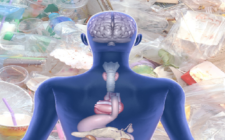Sexually transmitted diseases, or STDs, are infections that can be transferred from one person to another during oral, anal, or vaginal sex. Additionally, some STDs can spread from mother to child during nursing or childbirth. Chlamydia, gonorrhea, syphilis, trichomoniasis, herpes, HPV, hepatitis B, and HIV are among the most prevalent STDs. Numerous symptoms, including pain, itching, discharge, blisters, warts, and flu-like symptoms, can be caused by these illnesses. But many STDs, particularly in the early stages, have no symptoms at all and can go undiagnosed for a very long period.
Regular testing can identify sexually transmitted diseases (STDs) in children, allowing for an accurate diagnosis and prompt treatment. By being proactive, these health problems are avoided before they arise. Furthermore, treatments work best when started early; postponing them increases the chance of adverse long-term effects on health. Sexually transmitted diseases (STDs) must be identified and treated as soon as possible for several reasons.
Reduced Transmission
Early treatment is vital, so get treated for std online and get a lower chance of infecting other people. Early detection through testing is essential for stopping the transmission of infections within communities, as many sexually transmitted diseases (STDs) can be disseminated even in the absence of symptoms.
Prevention of Complications
Early identification enables timely treatment, which can stop STDs from developing into more serious medical issues. If left untreated, many STDs can have significant side effects, including infertility, pelvic inflammatory disease, persistent discomfort, and even some types of cancer.
Better Results and Health Equity
Early intervention decreases the length and intensity of symptoms while also increasing the efficacy of therapy. Antibiotics, for instance, can successfully cure bacterial sexually transmitted diseases (STDs) such as gonorrhea and chlamydia, but their effectiveness wanes with treatment delay. By guaranteeing that everyone has timely access to screening and treatment services, regardless of socioeconomic level or access to healthcare, early detection and treatment initiatives can help reduce health inequities. This may lessen the disproportionate toll that STDs take on underprivileged groups of people.
Avoiding Long-Term Impacts on Health
Herpes, HPV, and HIV/AIDS are a few STDs that are chronic infections. Even though there might not be a cure, early diagnosis and treatment can help control symptoms, lessen complications, and enhance the affected person’s quality of life in general.
Safeguarding Sexual Partners and Cost-Effectiveness
Early detection and treatment of sexually transmitted diseases (STDs) affects not only the health of the affected person but also their partners’ health. The chance of unintentionally infecting others is significantly decreased with early intervention. By averting more costly sequelae from untreated STDs, early detection and treatment programs can ultimately save healthcare expenses. Furthermore, stopping the transmission of illnesses lessens the financial burden on people and healthcare systems, as well as the requirement for long-term medical care.
Key Takeaway
Overall, prioritizing early identification and treatment of STDs is critical for protecting individual health, avoiding transmission throughout communities, and decreasing the long-term social effects of these illnesses. It necessitates all-encompassing initiatives, such as destigmatizing obtaining sexual health care, providing access to testing and treatment options, and providing information.




